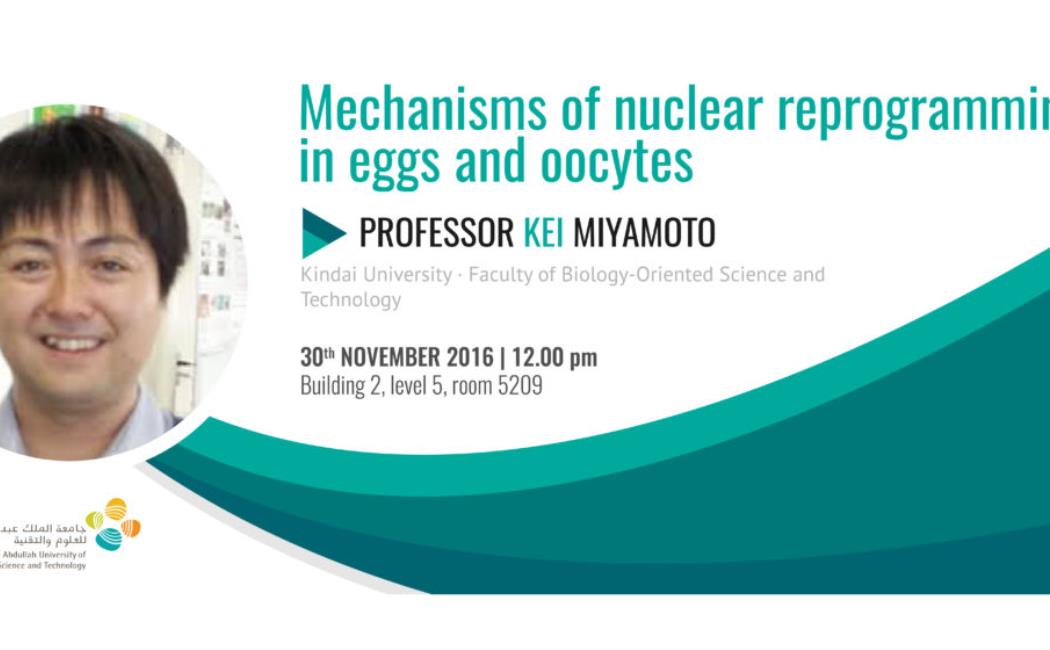
Mechanisms of nuclear reprogramming in eggs and oocytes
Eggs have a remarkable ability to support development of fertilised embryos and to reprogram transplanted somatic nuclei by activating embryonic and pluripotency genes. Increasing evidence suggests that eggs can reprogram somatic nuclei most efficiently among different reprogramming systems. Moreover, somatic cell nuclear transfer to eggs offers unique opportunities to revive animals from frozen tissues potentially including extinct animals, to produce transgenic animals from somatic cells and to propagate animals with beneficial traits. Here, I will introduce two different nuclear transfer systems to study reprogramming of somatic nuclei; transplantation of mammalian cell nuclei into the nucleus of the Xenopus laevis oocyte, referred to as the germinal vesicle (GV), and nuclear transfer of a mouse somatic cell nucleus into an enucleated mouse egg at the metaphase II stage. The nuclear transplantation of somatic nuclei into the GV of the Xenopus oocytes is well suited for identification of oocyte reprogramming factors since transplanted nuclei rapidly undergo transcriptional reprogramming without the need for cell divisions, DNA replication, and new protein synthesis, but cannot create new cell types. We have revealed several important reprogramming mechanisms using this nuclear transfer system. Somatic cell nuclear transfer to a metaphase II stage egg can result in cloned offspring. However, the low success rate of animal cloning has been an issue. We have recently developed a method to greatly improve the mouse cloning. I will explain about the mechanisms of how somatic nuclei acquire totipotency, an ability to differentiate into all cell types, by focusing on our recent finding.
Biosketch: Kei Miyamoto graduated with a BA of Agricultural Sciences from Kyoto University, Japan. He received his PhD in 2009 from Kyoto University, working on mammalian nuclear transfer and reprogramming. Reprogramming techniques hold great promise for future regenerative medicine. Moreover, reprogramming of differentiated cells can be efficiently induced in eggs and oocytes (1). He developed an oocyte cell-free system, in which reprogramming events are induced in a large number of cells, in order to analyze reprogramming by biochemical. This oocyte extract enabled him to identify DJ-1 protein as a necessary oocyte component for development of nuclear transfer embryos (2). He then joined to the laboratory of Prof. John Gurdon in the University of Cambridge as a Research Associate. He continued to study oocyte reprogramming factors involved in the activation of embryonic genes. He has reported that polymerized actin in an oocyte nucleus is required for this reprogramming of transcription (3). He has also found that a nuclear actin-binding protein WAVE1 plays a key role in reprogramming and development (4). These findings unravel unexpected roles of actin and actin-binding protein. More recently, together with his colleagues he was able to identify molecular steps leading to transcriptional reprogramming in oocytes (5). From 2015, he returned to Japan to start up his research group at Kindai University. His current research interest is to further reveal reprogramming factors and mechanisms that eggs/oocytes possess and dissect epigenetic regulations important for early embryonic development (6).
Selected publications
- Jullien J, Pasque V, Halley-Stott RP, Miyamoto K and Gurdon JB. Mechanisms of nuclear reprogramming by eggs and oocytes: a deterministic process? Nat Rev Mol Cell Biol. 2011; Vol.12(7):453-459.
- Miyamoto K. et al., Identification and characterization of an oocyte factor required for development of porcine nuclear transfer embryos. Proc Natl Acad Sci USA. 2011; Vol.108(17):7040-7045
- Miyamoto K. et al., Nuclear actin polymerization is required for transcriptional reprogramming of Oct4 by oocytes. Genes Dev. 2011; Vol.25(9):946-958.
- Miyamoto K. et al., Nuclear WAVE1 is required for reprogramming transcription in oocytes and for normal development. Science. 2013; Vol. 341(6149):1002-1005.
- Jullien J*, Miyamoto K*, Pasque V*, et al., *co-first authors. Hierarchical molecular events driven by oocyte-specific factors lead to rapid and extensive reprogramming. Mol Cell. 2014; Vol. 55(4):524-536.
- Herberg S, Simeone A, Oikawa M, Jullien J, Bradshaw CR, Teperek M, Gurdon J and Miyamoto K. Histone H3 lysine 9 trimethylation is required for suppressing the expression of an embryonically activated retrotransposon in Xenopus laevis. Sci Rep. 2015; Vol. 5:14236.